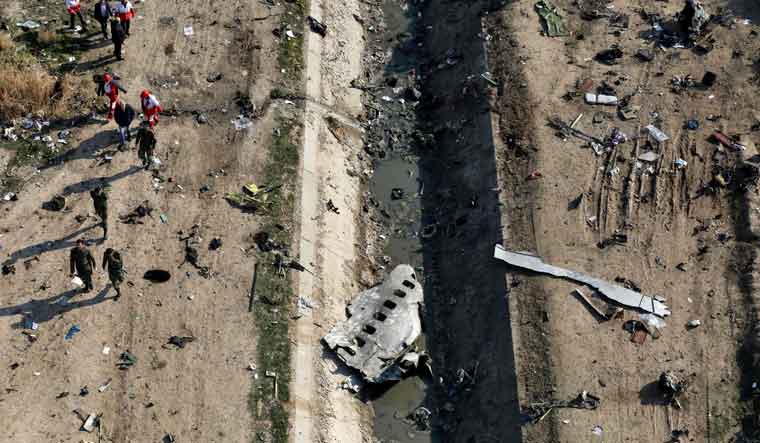In the pitch-black, pre-dawn sky on the outskirts of the Iranian capital Tehran, a tiny fast-moving light can be seen racing up through the trees, as someone films from the ground. Then there is a flash of light as it seems to collide with something in the air.
It is the ill-fated Ukrainian International airliner which had taken off Wednesday just hours after Iran had fired missiles at US bases in Iraq in retaliation for the slaying of its top military man, Gen. Qassem Soleimani.
Western leaders have said the plane seemed to have been unintentionally brought down by a surface-to-air missile near Tehran. Iran denies that a missile was to blame.
Videos verified by The Associated Press show the final seconds of the jet and what likely brought it down, killing all 176 people on board.
ViDEO: Footage verified by @AP shows the final seconds of the ill-fated Ukrainian International airliner which had taken off from Iran as it was downed. Read the story here: https://t.co/0OoxV49axV https://t.co/Noh2gUguhr
— The Associated Press (@AP) January 10, 2020
One video seems to show the impact. Buildings can seen from ground level below the darkened sky as the tiny light arches upward, then the flash. The scene is silent, except for a dog barking nearby. Then 10 seconds later, there is a frightening boom, like loud thunder.
A second video appears to show the plane on fire and crashing. A white blaze plummets downward across the black sky, sometimes letting off sparks. Then it disappears behind trees, and a huge fireball lights up the sky as it hits the earth.
Someone off-camera says in Farsi, "The plane has caught fire. Shahriar. Ferdosieh. In the name of God the compassionate, the merciful. God please help us. Call the fire department!" The names are two suburbs of Tehran near the airport.
Another clip, filmed from inside a travelling car at distance, shows a pinpoint fiery light moving at speed. This footage then shows the plane exploding far on the horizon, illuminating the darkened sky.
As part of the verification process, the AP compared buildings in view with map locations and in the precise context of where the jet went off the radar.
Iran denies downing flight PS752
Iran on Friday denied Western allegations that one of its own missiles downed the Ukrainian jetliner.
"What is obvious for us, and what we can say with certainty, is that no missile hit the plane," Ali Abedzadeh, head of Iran's national aviation department, told a press conference.
"If they are really sure, they should come and show their findings to the world" in accordance with international standards, he added.
Hassan Rezaeifar, the head of the Iranian investigation team, said recovering data from the black box flight recorders could take more than a month and that the entire investigation could stretch into next year. He also said Iran may request help from international experts if it is not able to extract the flight recordings.
The ballistic missile attack on the bases in Iraq caused no casualties, raising hopes that the standoff over the killing of Gen. Qassem Soleimani would end relatively peacefully, though Iran has sent mixed signals over whether its retaliation is complete.
If the US or Canada were to present incontrovertible evidence that the plane was shot down by Iran, even if unintentionally, it could have a dramatic impact on public opinion in Iran.
US, Canadian and British officials said Thursday it is "highly likely" that Iran shot down the Boeing 737 that crashed near Tehran late Tuesday. US officials said the jetliner might have been mistakenly identified as a threat.
Canadian Prime Minister Justin Trudeau, whose country lost at least 63 citizens in the downing, said, "We have intelligence from multiple sources including our allies and our own intelligence. The evidence indicates that the plane was shot down by an Iranian surface-to-air missile."
The US officials did not say what intelligence they had that pointed to an Iranian missile, believed to be fired by Russian Tor system, known to NATO as the SA-15. But they acknowledged the existence of satellites and other sensors in the region, as well as the likelihood of communication interceptions and other similar intelligence.
Western countries may hesitate to share information on such a strike because it comes from highly classified sources.


